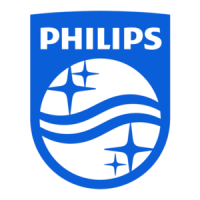EarlyVue VS30 Instructions for Use 1-3
Intended Use and Indications for Use
Intended Use and Indications for Use
The EarlyVue VS30 is intended to measure, display, alarm and, record physiological
information of adult, pediatric and neonatal patients in hospitals and in out-of-hospital
patient care settings in which care is administered by a healthcare professional (such as
clinics, outpatient surgery facilities, long-term care facilities, and physician offices). It is
not intended for use in mobile settings such as ambulances and aircraft. Clinical users
may use the monitor during patient transport within a healthcare facility.
The intended use of measurement parameters for each patient type is shown in table
below:
Contra-indications:
• Not for transport outside the healthcare facility.
• Not for use in home setting.
Essential Performance
Under normal operating conditions and throughout its entire lifecycle, the EarlyVue VS30
vital signs monitor accurately acquires and displays the supported physiological
parameters, providing performance that is free from unacceptable risks. In operating
modes that support alarm generation, the monitor detects and provides notification of
life-threatening physiological alarm conditions and technical alarm conditions and
provides notification in the form of auditory and visual alarm signals. The monitor
indicates when the described functionality is inoperative. Normal operating conditions
include electromagnetic interference, which is deemed a typical characteristic of the
clinical environment. If affected by such interference, the monitor is capable of providing
risk-free automatic recovery.
Patient Type
Parameter Adult Pediatric Neonatal
Non-invasive BP (NBP)
SpO
2
(Masimo rainbow SET or Philips FAST
Pulse Rate (PR) derived from SpO
2
or NBP
Temperature (Predictive, Temporal)
end tidal CO
2
(etCO
2
)
Respiration Rate: airway respiration (awRR)
Respiration Rate: acoustic respiration (RRa)
Non-invasive Total Hemoglobin (SpHb)

